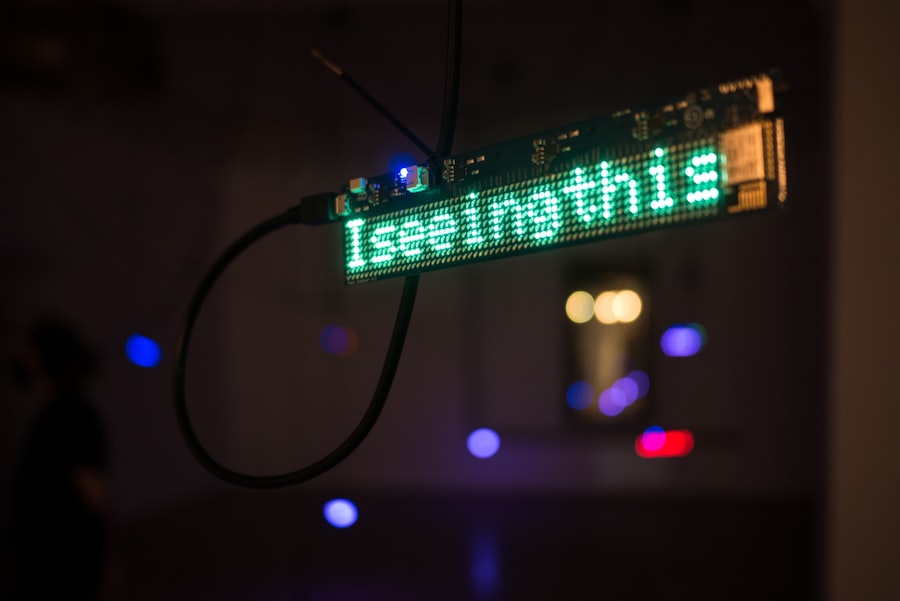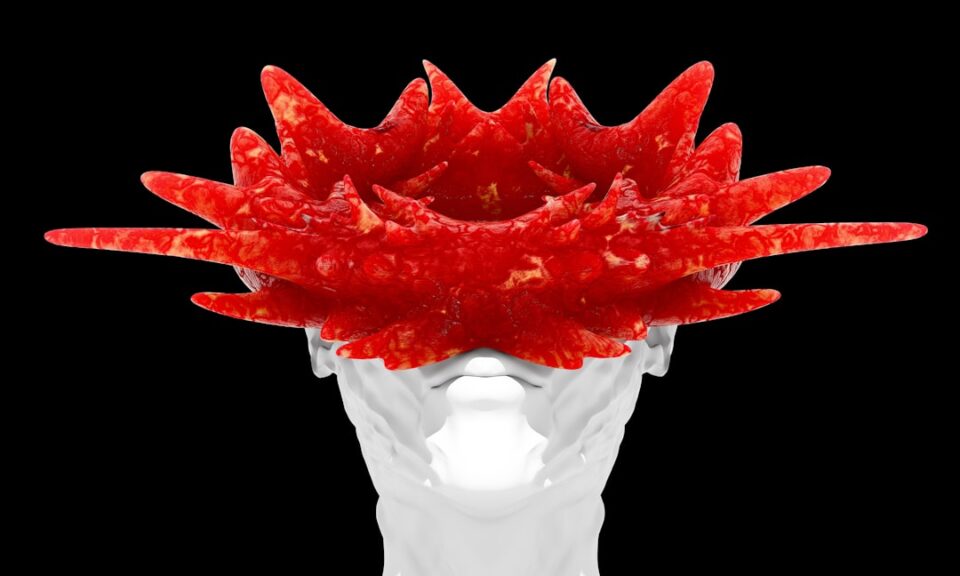The emergence of non-fungible tokens (NFTs) has revolutionized the art world, creating a paradigm shift that has captivated artists, collectors, and investors alike. Initially gaining traction in 2017 with the launch of CryptoPunks and other digital collectibles, NFTs have since exploded in popularity, culminating in high-profile sales that have made headlines around the globe. Artists who once struggled to find a platform for their digital creations are now able to monetize their work in unprecedented ways.
The allure of NFTs lies not only in their ability to authenticate ownership of digital art but also in the potential for artists to earn royalties on secondary sales, thus creating a sustainable income stream that was previously elusive in the traditional art market. As the art world grapples with this new digital frontier, it is essential to recognize the implications of NFTs beyond mere financial transactions. They have democratized access to art, allowing a broader audience to engage with and invest in creative works.
This shift has led to a burgeoning community of digital artists who are redefining what it means to create and collect art in the 21st century. The rise of platforms like OpenSea, Rarible, and Foundation has facilitated this transformation, providing artists with the tools they need to mint their work as NFTs and connect directly with buyers. As a result, the traditional gatekeepers of the art world—galleries and auction houses—are being challenged by this new wave of digital creativity, prompting a reevaluation of how art is valued and appreciated.
Key Takeaways
- NFTs are revolutionizing the art world, providing new opportunities for artists and collectors alike.
- Understanding the NFT market involves grasping the concept of digital ownership and the blockchain technology that underpins it.
- NFT collectibles span a wide range of assets, from traditional trading cards to virtual real estate, offering diverse investment opportunities.
- Navigating the legal and ethical considerations of NFTs is crucial, as issues such as copyright and environmental impact come into play.
- Investing in NFTs requires careful consideration and strategy, with tips including thorough research and diversification.
Understanding the NFT Market: What You Need to Know
To navigate the NFT market effectively, it is crucial to grasp its fundamental principles and dynamics. At its core, an NFT is a unique digital asset that represents ownership of a specific item or piece of content, secured on a blockchain. Unlike cryptocurrencies such as Bitcoin or Ethereum, which are fungible and can be exchanged for one another, NFTs are distinct and cannot be replicated.
This uniqueness is what gives NFTs their value, as collectors are often willing to pay significant sums for one-of-a-kind pieces or limited editions. The market is characterized by volatility, with prices fluctuating dramatically based on trends, demand, and the reputation of the artists involved. Moreover, understanding the various platforms and marketplaces where NFTs are bought and sold is essential for anyone looking to enter this space.
Each platform has its own set of rules, fees, and community standards, which can significantly impact the buying and selling experience. For instance, some platforms cater specifically to artists and creators, while others focus on collectibles or gaming assets. Additionally, the environmental impact of blockchain technology has sparked debates within the community, leading to discussions about more sustainable practices and alternative blockchains that offer lower energy consumption.
As the NFT market continues to evolve, staying informed about these developments will be key to making educated decisions.
Exploring NFT Collectibles: From Trading Cards to Virtual Real Estate

NFT collectibles have emerged as one of the most exciting facets of the NFT ecosystem, encompassing a wide range of digital assets that appeal to diverse interests. From virtual trading cards featuring beloved sports figures to unique in-game items that enhance gaming experiences, these collectibles have captured the imagination of enthusiasts worldwide. The nostalgia associated with traditional collectibles has seamlessly transitioned into the digital realm, where rarity and provenance play pivotal roles in determining value.
Platforms like NBA Top Shot have successfully tapped into this market by allowing fans to buy, sell, and trade officially licensed moments from basketball games as NFTs, creating a new form of engagement with sports. In addition to trading cards and gaming assets, virtual real estate has emerged as a groundbreaking concept within the NFT space. Virtual worlds such as Decentraland and The Sandbox allow users to purchase parcels of land as NFTs, enabling them to build, develop, and monetize their virtual properties.
This innovative approach has attracted investors looking for new opportunities in the digital economy, blurring the lines between physical and virtual ownership. As more people spend time online and engage with virtual environments, the demand for virtual real estate is expected to grow exponentially. This trend not only highlights the versatility of NFTs but also raises intriguing questions about the future of property ownership in an increasingly digital world.
Navigating the Legal and Ethical Considerations of NFTs
| Legal and Ethical Considerations of NFTs | Metrics |
|---|---|
| Copyright Infringement | 20 reported cases |
| Ownership Rights | 30% increase in disputes |
| Smart Contract Vulnerabilities | 10 security breaches |
| Environmental Impact | 50% increase in carbon footprint |
As NFTs continue to gain traction across various industries, legal and ethical considerations have come to the forefront of discussions surrounding their use. One significant issue is copyright infringement; many creators have found their work tokenized without permission or proper attribution. This has led to calls for clearer regulations regarding intellectual property rights in the NFT space.
Artists must be vigilant about protecting their work while also understanding how copyright laws apply to digital assets. The decentralized nature of blockchain technology complicates matters further, as it can be challenging to trace ownership and ensure that creators receive fair compensation for their contributions. Ethical considerations also extend to environmental concerns associated with blockchain technology.
The energy-intensive processes required for minting and trading NFTs have raised alarms about their carbon footprint. As awareness grows regarding climate change and sustainability, many artists and collectors are seeking eco-friendly alternatives or advocating for platforms that utilize less energy-intensive blockchains. This shift towards sustainability reflects a broader societal trend toward responsible consumption and ethical practices in all areas of life.
As the NFT market matures, addressing these legal and ethical challenges will be crucial for fostering a healthy ecosystem that respects both creators’ rights and environmental considerations.
Investing in NFTs: Tips and Strategies for Success
Investing in NFTs can be both exhilarating and daunting due to the market’s inherent volatility and unpredictability. To navigate this landscape successfully, potential investors should approach it with a well-thought-out strategy rather than impulsively jumping into purchases based on hype or trends. One essential tip is to conduct thorough research on artists and projects before investing.
Understanding an artist’s background, previous works, and community engagement can provide valuable insights into their potential for future success. Additionally, keeping an eye on emerging trends within the NFT space can help investors identify promising opportunities before they become mainstream. Diversification is another critical strategy for NFT investors.
Just as traditional investment portfolios benefit from a mix of assets across different sectors, NFT portfolios should include a variety of types—ranging from digital art to collectibles and virtual real estate—to mitigate risk. Furthermore, investors should consider setting a budget for their NFT purchases and adhering to it strictly; this discipline can prevent emotional decision-making during market fluctuations. Engaging with communities on social media platforms like Twitter or Discord can also provide valuable information about upcoming drops or trends while fostering connections with other collectors and investors who share similar interests.
The Future of NFTs: Trends and Innovations to Watch

Immersive Experiences through AR and VR
One trend gaining momentum is the integration of augmented reality (AR) and virtual reality (VR) into NFT experiences. Artists are beginning to explore how these technologies can enhance the way audiences interact with their work, creating immersive environments that transcend traditional viewing experiences.
Redefining Art Consumption and Appreciation
This shift could redefine how art is consumed and appreciated, offering new dimensions that engage viewers on multiple sensory levels. The integration of AR and VR technologies has the potential to revolutionize the way we experience art, making it more interactive and engaging.
Collaborations between Brands and Artists
Another significant trend is the increasing collaboration between brands and artists within the NFT space. Major companies are beginning to recognize the potential of NFTs as marketing tools that can foster deeper connections with consumers. By partnering with artists to create limited-edition digital collectibles or experiences tied to their brand narratives, companies can tap into new revenue streams while supporting creative talent.
How to Get Started in the NFT Market: A Beginner’s Guide
For those eager to dive into the world of NFTs but unsure where to begin, taking a structured approach can make the process more manageable. First and foremost, aspiring collectors should familiarize themselves with blockchain technology and how NFTs function within it. Understanding concepts such as wallets, gas fees, and smart contracts will provide a solid foundation for navigating various platforms where NFTs are bought and sold.
Numerous online resources—ranging from articles to video tutorials—are available to help demystify these concepts for newcomers. Once equipped with foundational knowledge, potential buyers should create a digital wallet compatible with Ethereum or other blockchains that support NFTs. This wallet will serve as a secure storage space for purchased tokens while also enabling transactions on various marketplaces like OpenSea or Rarible.
After setting up a wallet, individuals can explore different platforms to discover artists and projects that resonate with them personally. Engaging with communities on social media platforms can also provide valuable insights into upcoming drops or trends while fostering connections with other collectors who share similar interests. By taking these initial steps thoughtfully, newcomers can embark on their NFT journey with confidence and enthusiasm.
In exploring the diverse landscape of the NFT market, which spans from digital art to unique collectibles and beyond, it’s crucial to understand the underlying technologies and economic dynamics. A related article that delves into these foundational aspects, particularly focusing on the financial implications, is “Deciphering Cryptocurrency: Risks and Rewards.” This piece provides an insightful analysis of the cryptocurrency market, which is integral to the functioning of NFTs, offering a deeper understanding of the risks and rewards associated with digital investments. For those interested in the economic underpinnings of NFTs, this article is a must-read. You can find it here: Deciphering Cryptocurrency: Risks and Rewards.
FAQs
What are NFTs?
NFTs, or non-fungible tokens, are digital assets that represent ownership or proof of authenticity of a unique item or piece of content using blockchain technology.
What are the main categories of NFT markets?
The main categories of NFT markets are art, collectibles, and beyond. The art category includes digital artwork and other forms of digital expression. The collectibles category includes items such as trading cards, virtual goods, and other unique digital items. The “beyond” category encompasses a wide range of unique digital assets, including virtual real estate, domain names, and more.
How are NFTs bought and sold?
NFTs are bought and sold on various online platforms called NFT marketplaces. These marketplaces allow users to create, buy, sell, and trade NFTs using cryptocurrency.
What is the significance of NFTs in the art world?
NFTs have disrupted the traditional art world by providing a new way for artists to create, sell, and authenticate their digital artwork. NFTs also allow for direct artist-to-collector transactions, cutting out the need for intermediaries such as galleries and auction houses.
What are some examples of NFT marketplaces?
Some examples of NFT marketplaces include OpenSea, Rarible, Foundation, and NBA Top Shot. These platforms allow users to buy, sell, and trade a wide variety of NFTs across different categories.
